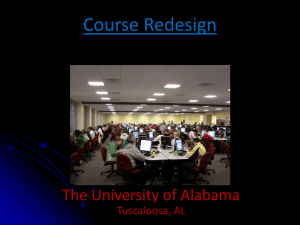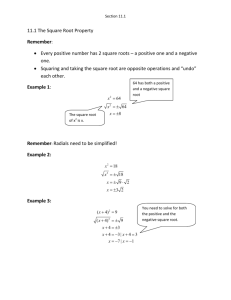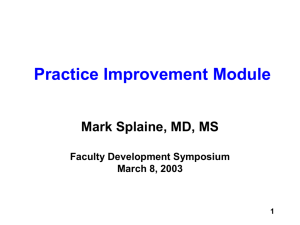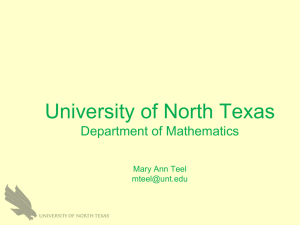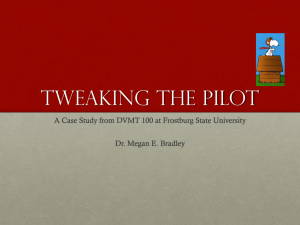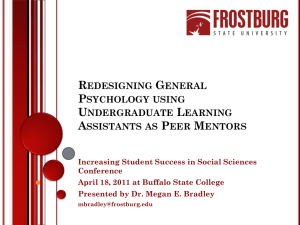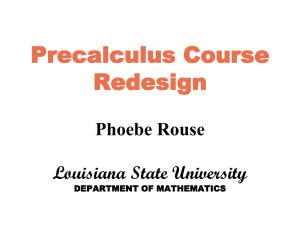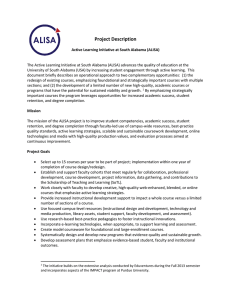Angelito Garcia
advertisement
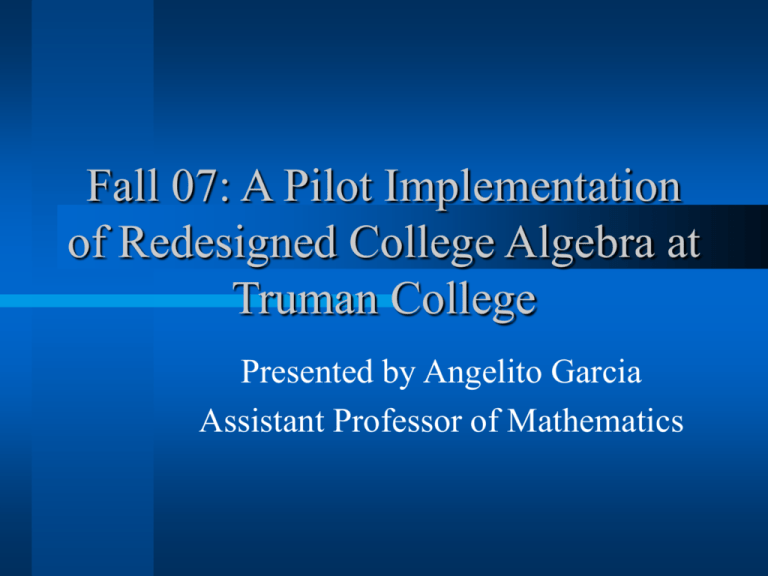
Fall 07: A Pilot Implementation of Redesigned College Algebra at Truman College Presented by Angelito Garcia Assistant Professor of Mathematics The Truman College Experience with the College Algebra ~ Traditional Format Low Retention - 27% withdraw Low Success Rate - 53% of those who remain get a grade of C or higher Gate-keeper course (High potential to increase enrollment) ELEMENTS OF THE ORIGINAL REDESIGN MODEL: Project Goals Institutional reasons: increase student performance and retention rates, address student attitudinal issues, lower costs Student-Centered Reasons: poor success rates, math 140 considered a bottleneck course, traditional lecture format made for inappropriate learning environment, more flexibility for students Instructor-Centered Benefits: Reduced time spent on meaningless routines and increased instructor focus on content rather than management Analysis of Pilot (Fall 07) Results Baseline Retention - 27% withdraw Pilot Retention: 30.4% [Comment] Baseline Success Rate : 53% (A,B,C) Pilot Success Rate: 56.7% (A,B,C) Baseline Test Results: 6.9 / 10 [Comment] Pilot Assessment – 6.4 / 10 [Comment] Greatest Student Transformation: Overcoming the initial struggles with new technology and using it to the hilt as they maximized active learning away from the classroom. (Comment) Most many students who were able to install the MyMathLab plug-ins in their home computers expressed deep satisfaction in the online aspects of course redesign. Might have helped blazed the way for student’s acceptance of the use of online course management software for other subject areas courses especially math courses. Removed student’s tendency to give up so easily. (Cite operant conditioning from psychology) Transferable tech skills (cite an example of a former student using TI-83 to do complicate chemistry problems) What implementation issues were most important? Technology issues centering on MML as the course management software in the implementation Dealing with a non-existent computer lab dedicated to redesign Departmental collaboration and core support Communication amongst the redesign course coordinator, redesign Instructors, math chair, administrators, and manager of classroom scheduling What’s still missing and unimplemented from the original model. More interactive and harmonious partnerships between math faculty within math department, between math department and administration, between math dept and systems people. A truly dedicated “24/7” math lab equipped with the MML plug-ins and redesign technologies A handful of good math tutors whose major focus is to assist college algebra (math 140) students Special fund for training adjuncts who will join as math 140 instructors and available for instant rehiring. What can be added to enhance the redesign experience. A fine website to supplement the MML (Truman faculty online lectures can be uploaded to work in tandem with MML videos/animations) A video camera to tape the above lectures An enhanced math lab that can track the visits and total hours spent by the student at the computer terminal Require students to visit with math tutor/math lab a certain number of hours per week (curriculum tweaking issues?) as a means to make up for absences and tardiness Customized edition of the textbook Involvement of adjuncts committed to the redesign concept Appointment of a coordinator with release time privileges
